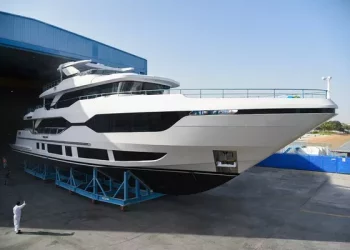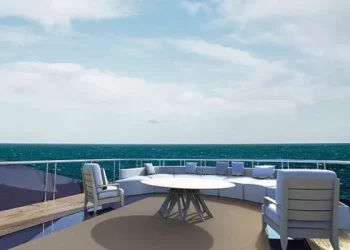: Method inventory of power equipment maintenance.
Run fast, all depend on the maintenance of good.
Maintaining yacht is a knowledge, the more you know, the more frequently you use, the easier the operation, the more fun it is to play.
For an engine, oil and water temperature are crucial.
Oil is the blood of yachts. Water is like the water in the human body. Whether the water temperature is appropriate directly affects the work of the engine, and the oil also directly affects the lubrication degree in the engine.
The engine must be regularly tested and replaced with water and oil.
If the engine does not change the oil regularly, after opening the engine, you will find a lot of heavy and greasy like tar.
Greasy is due to often do not change the oil caused by the deterioration of oil oxidation, or oil quality is not up to standard.
The antioxidant added too little, resulting in greasy adhesion to the engine, the formation of a kind of “oil calcium”, causing serious engine wear, loss of lubrication engine easy to “bite to death” cause yacht anchored.
So it is best to carry out the maintenance and maintenance of the engine in accordance with the hours specified by the manufacturer.
Usually pay more attention to whether the engine has abnormal sound, if the engine is found to have abnormal sound, it is necessary to timely repair.
Whether the oil line, water or ignition system and fan problems.
When the water temperature is high, the engine oil becomes thinner, because the oil is also cooled by water. Once the oil becomes thinner, the friction gap in the engine becomes smaller, which will produce a metal crash sound similar to “dada dada”.
If the water temperature is too high and is not adjusted in time, it will lead to the oil temperature is too high and the boiling point of the oil will smoke and evaporate, resulting in the combustion smell of the oil.
Because the cylinder cover of the engine is mostly made of aluminum alloy, and the purpose of using aluminum alloy engine is to better help the engine heat dissipation of the vehicle, so it is very sensitive to the change of temperature.
Once the water temperature reaches more than 100 degrees and even 200 degrees, the aluminum alloy engine is easy to produce bending caused by water leakage, a large amount of water may be poured into the engine to cause engine flaking, anchored and other accidents.
Check the level of oil in the engine regularly.
Check coolant status regularly.
Check the fan belt regularly.
The seawater filter should be checked every 25 hours when activated.
Check nozzle and steering oil cup for lubrication.
The first time to change the engine’s gasoline filter is 20 hours after starting, and every 200 hours thereafter.
Change the oil in the engine every 100 hours.
Change the gear oil every 200 hours.
Replace the air filter every 200 hours.
Fuel filters are replaced annually.
Keep oil, water, air and body clean.
The use of lubricating oil with excellent cleaning and dispersing performance and regular use of gasoline cleaning agent to clean the engine nozzle inlet valve and combustion chamber is the primary condition to extend the life of the engine.
Batteries on yachts are generally maintenance-free, but there are ways to increase their effectiveness and longevity: keep them fully charged.
This can make the battery to maintain a long service life;
Check the battery at least every 30 days;
Clean battery connectors and wiring harnesses regularly.
Check whether the battery cable is properly connected to the terminal.
Tighten the terminal nut by hand and then tighten it by 1/4 turn with a wrench.
Check the electrolyte capacity of each battery in the battery pack.
Electrolyte capacity liquid level should be above the mark.
If the liquid level is below the mark, add distilled water until the electrolyte reaches the appropriate volume value.
Beware of overfilling the battery case with electrolyte.
Place the battery in a cool, dry place when charging for a long time.
Check the battery level every three months using a liquid hydrometer or voltmeter.
If the specific gravity is lower than 1.225 or the voltage is lower than 12.4, charge the battery.
Check the following components at least once a week (and before use if the vessel is operating regularly) : Refrigeration system – Flush the seawater area after each use.
Seawater filter – clean if necessary.
The outer surface of power components — clean and spray paint once a year, and spray rust inhibitor regularly.
Engine crankcase fuel – Check the quantity weekly.
Seal coolant – Check the quantity weekly.
Power steering hydraulics – Check the quantity weekly.
Aft drive fuel – Check the quantity weekly.
Battery – Check the battery every week.
Power leveling pump fuel – Check the quantity weekly.
Anode – check to prevent corrosion.
Rotating device housing suction device – check to prevent Marine life breeding and residual debris.
Propeller shaft – lubrication.
Drive running belt – check condition and test tension.












































